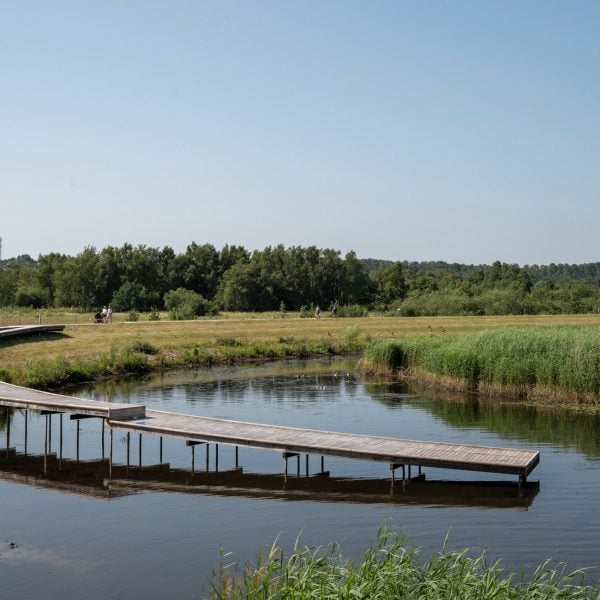Danish architecture studio CF Møller has integrated a nature park into a flood defence system beside the Gudenå river in Randers, Denmark.
Combining urban planning, climate change adaptation and nature conservation to create an “architectural multi-tool”, CF Møller sought to create a system that would reduce flooding risks for the nearby town and serve as a green space for locals.
Designed in collaboration with the city of Randers and local utility service Vandmiljø Randers, the Stork Meadow project saw the addition of technical strategies such as retention pools and a pumping station, alongside the integration of public walkways and seating to promote recreational activities.
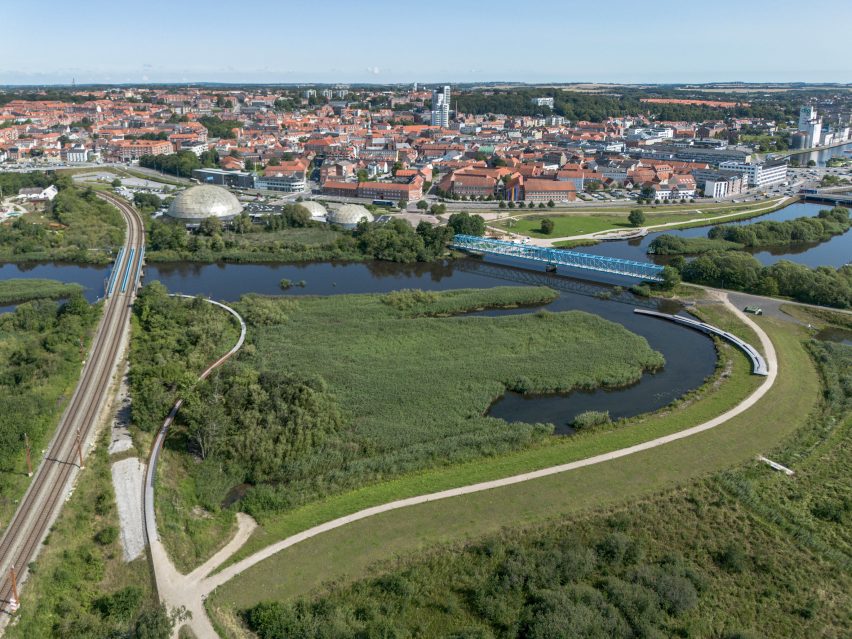
“The idea has been to pool various resources and investments to create something of an architectural multi-tool, where increased natural values and public access to nature go hand-in-hand with flood protection and stormwater mitigation, which both are real challenges in the river city of Randers,” studio partner Julian Weyer told Dezeen.
“Our initial approach was to convert a sad situation due to climate change into a positive possibility to involve people more in the surrounding nature for both recreational and educational purposes.”
Key to the project was the transformation of the site’s threatened grasslands into wetlands, where retention pools help to absorb stormwater before being released into the river.
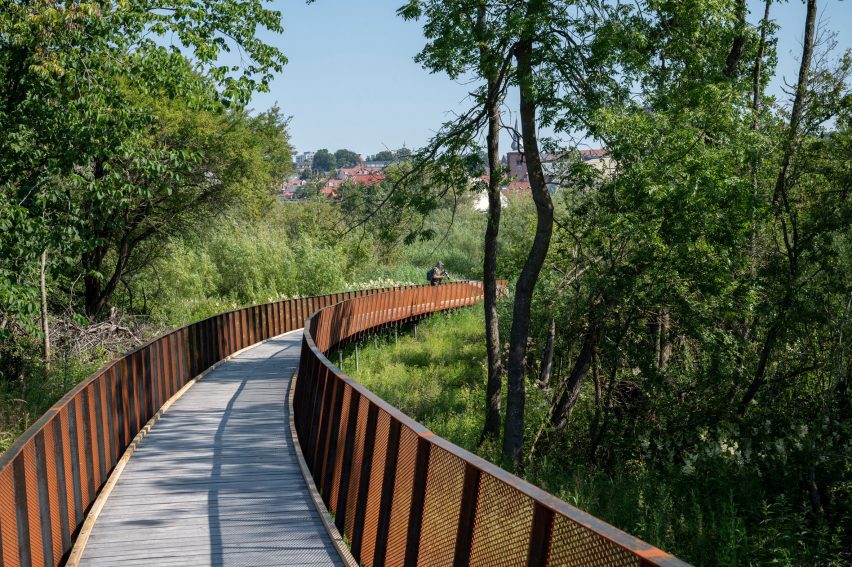
Beyond this, a raised dyke stretches along the river bank to provide flood protection and is coupled with an integrated pumping station that lifts stormwater from the meadow and into the river.
Additional interventions include the adaptation of roads in the surrounding neighbourhoods, which have been redesigned to channel rainwater to the wetlands rather than into the sewers.
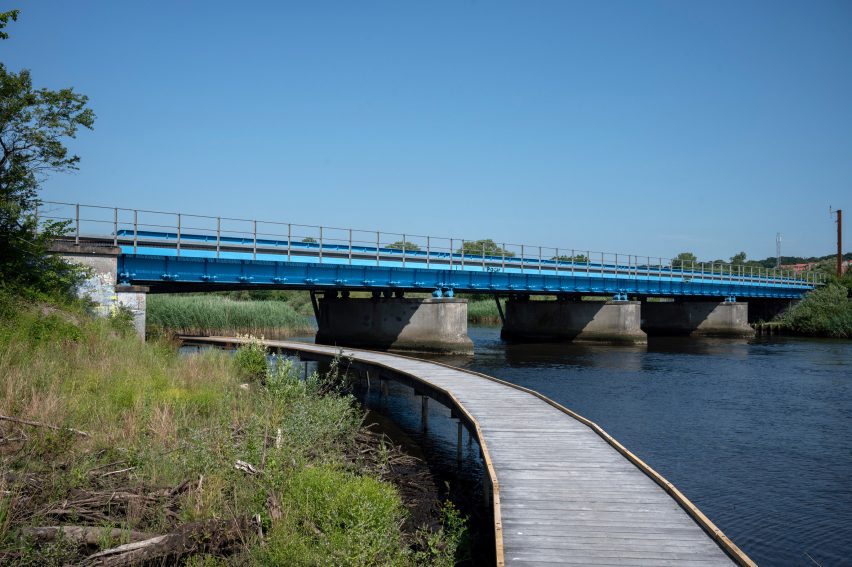
Aiming to combine these flood defences with recreational space, a series of new walkways and bridges carve through the Stork Meadow landscape to provide access to previously inaccessible locations.
Among these additions is a raised, crescent-shaped walkway composed of timber planks and weathered steel railings that provides a public trail over the meadows.
Additionally, a stepped boardwalk made from larch planks curves down from the dyke and across the wetlands to serve as a jetty at the bank of the river.
Further public space is hosted by a seating area composed of large wooden blocks.
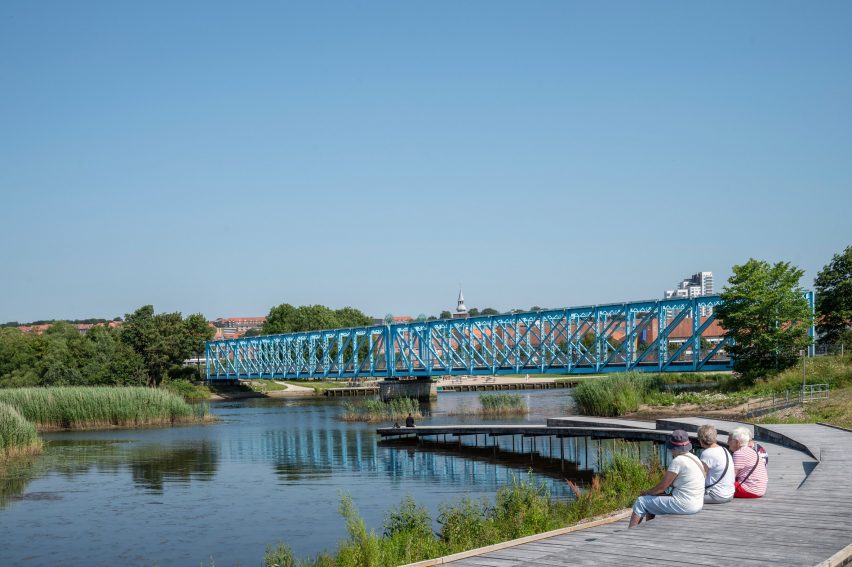
“The Stork Meadow was an inaccessible, missing link in the nature trails through the Randers river delta, which are also bisected by a railroad line,” Weyer said.
“The new walkways and bridges remedy this, both in terms of accessibility and connectivity, and as a basis for launching kayaks, sunset-gazing and learning about the new nature values through integrated info-points.”
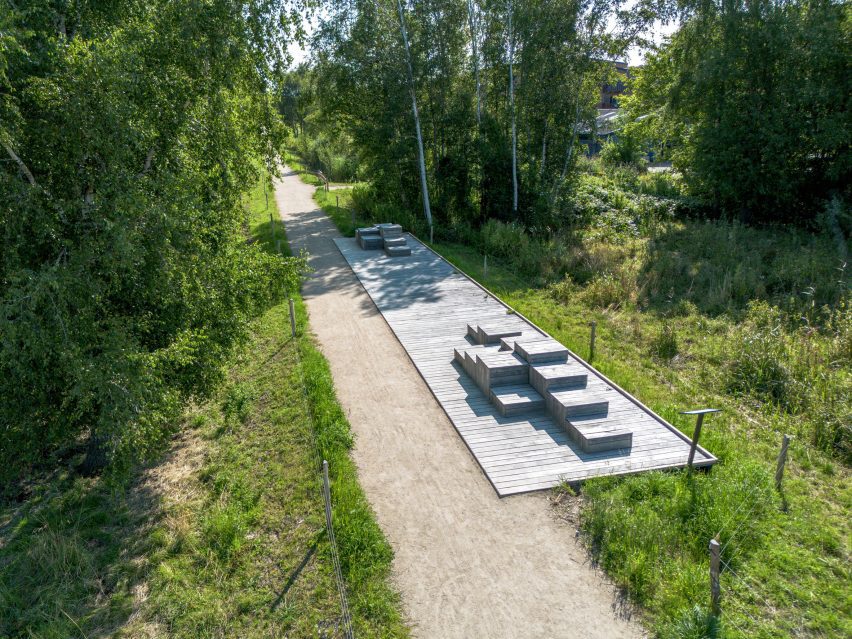
Other projects recently completed in Denmark include a floating pyramidal pavilion designed to be towed between cities to “raise awareness about the underwater world” and a curved concrete church in Roskilde.
The photography is by Peter Sikker Rasmussen unless otherwise stated.

